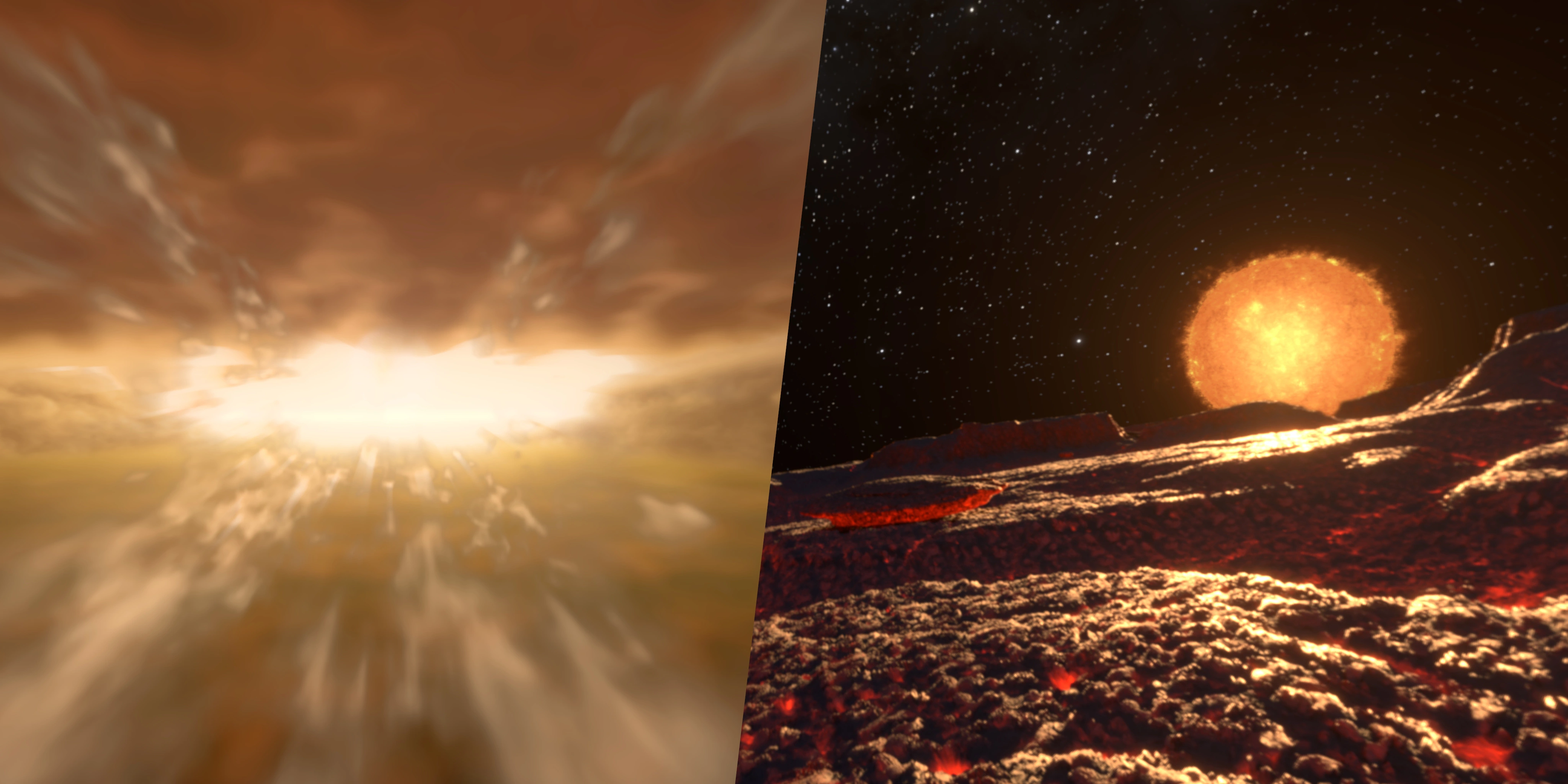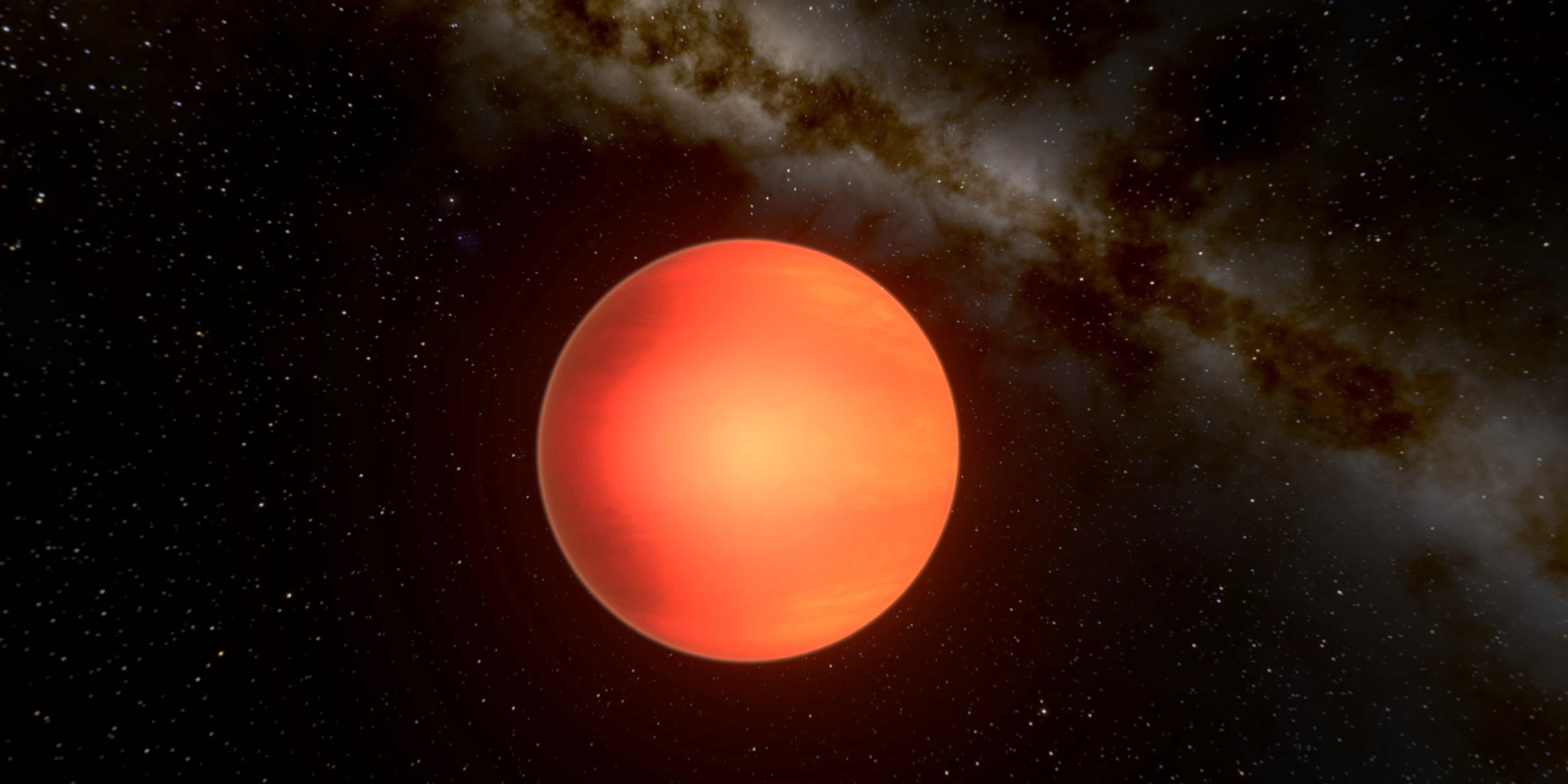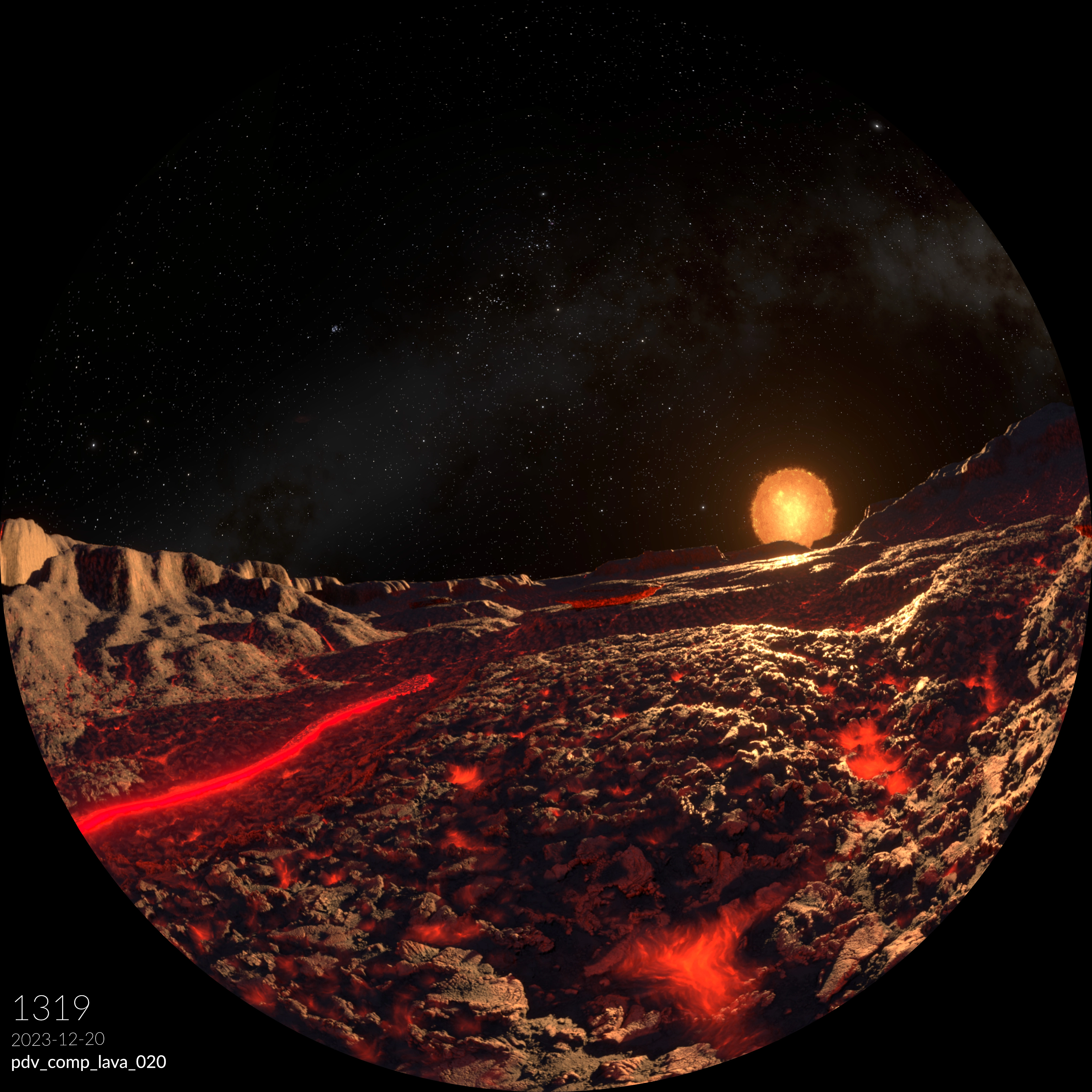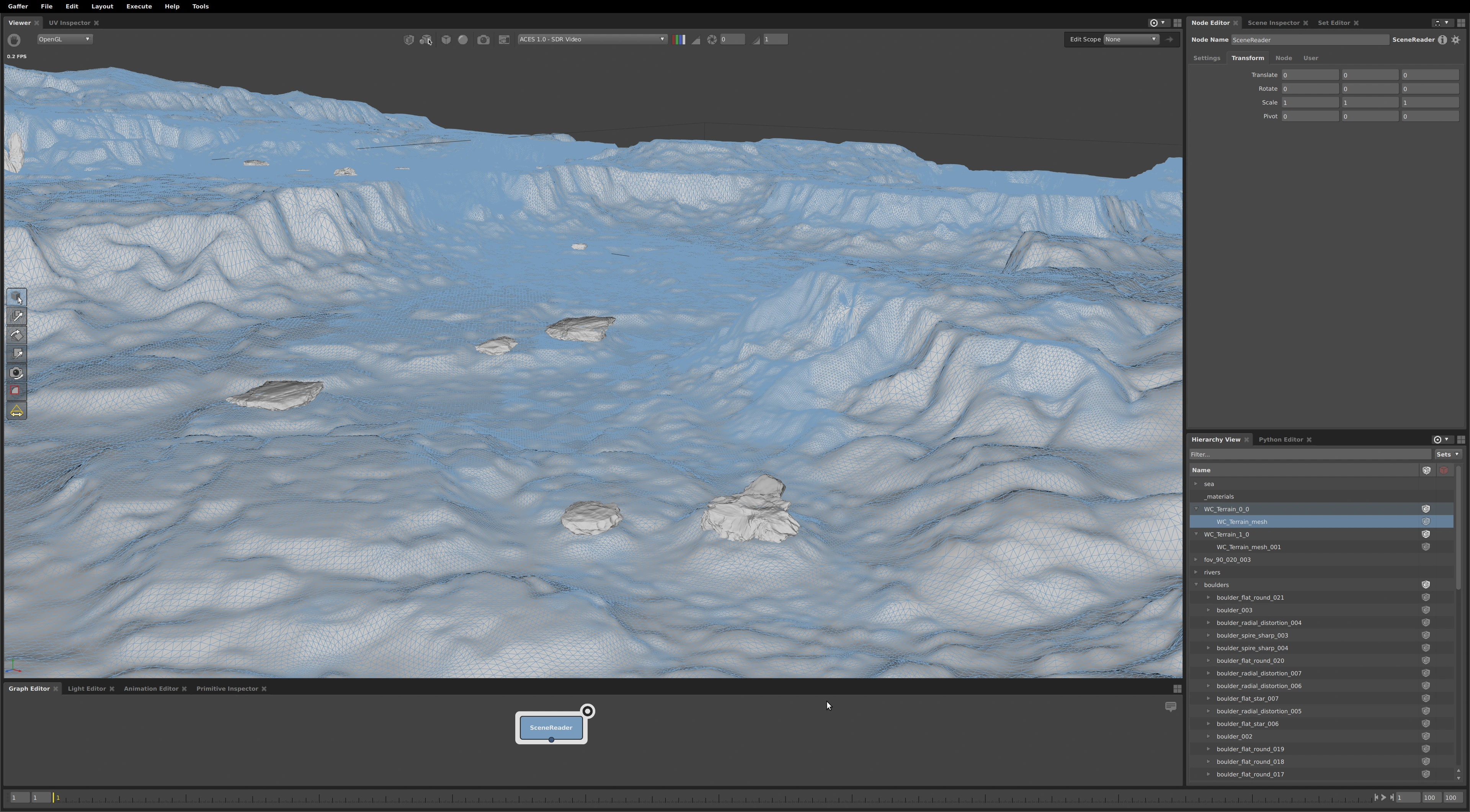Case Study: Planet Development - Exoplanets

Lyon Ritchie delivered two full-dome animated sequences for digital artist Glen Johnson for a show at client Planetarium Hamburg in Germany. Planet Development: Exoplanets (Exoplanets) transports visitors to a violent "hot Jupiter" and a melty, rocky lava planet. The planetarium, located in an upcycled water tower in Hamburg Stadtpark, attracts hundreds of thousands of visitors each year.
Problem
Planetarium Hamburg provided concept art for two completely different worlds – both very close to their respective star, and extremely hot… and these worlds needed to be baked in time for a grand-opening reveal in less than three months.
Our Approach
For Exoplanets we leaned on real-time rendering tech to render the main elements of each scene in several layers. Because the planetarium in Hamburg is at a steep forward tilt we were able to build in a way that allows removal of elements that fall behind the camera – freeing compute resources.

Solution
Hot Jupiter
This Jupiter-like gas giant orbits very close to its star, 51 Pegasi, and is tidally locked: One side of the planet is always facing the star. Observations have mapped out the circulation of super-heated gases over the planet which inspires our rendition.
On approach we see the bright, star-facing side – bright yellows change from orange to red as the camera circles around the dark side before diving into the gaseous surface – and the most challenging part of this sequence. Emerging from this top layer of thick clouds reveals another thick layer below and flowing clouds all around – about 8 layers in all are composited together to create this scene.
To get these layers required several steps, but the most challenging – and rewarding – was adjusting the shaders in Unreal to give us that balance between quality and render speed. Careful compositing brings it all together within the project’s timeline.
Lava Planet
This planet is based on GJ 367 b, recently named Tahay,[1] a rocky planet 31 light years from earth. Tahay’s tidally-locked orbit is close enough to its star to cause a molten sea to form, the dark side of the planet is cold and rocky and the transition between the two hemispheres is traced with rivers of molten rock.

At this point we’ve had enough experience with Unreal Engine to know we wanted it for the canyon run shot. Nanite tessellation would give us all that wonderful rocky detail (from Quixel textures) while Lumen would allow for efficient bounce-lighting from the glowy-lava bits. However striking the test renders were, finding the right settings for the final dome-master took some time.

Using Unreal to render this sequence wasn’t without its missteps. Due to the size of our canyon we were forced to pivot from using Unreal’s landscape tools and instead import the canyon as a static mesh – well over 6 million polygons for the ground. Large boulders and streams of lava were imported separately. The USD Stage Actor made this process less painful and we look forward to utilizing USD much more in future projects.
Results
In less than three months Lyon Ritchie delivered two finished sequences, a shot for a third sequence (that was later cut), and texture maps for the planets – over 5,000 frames of full-dome 3d animation at 4k resolution.